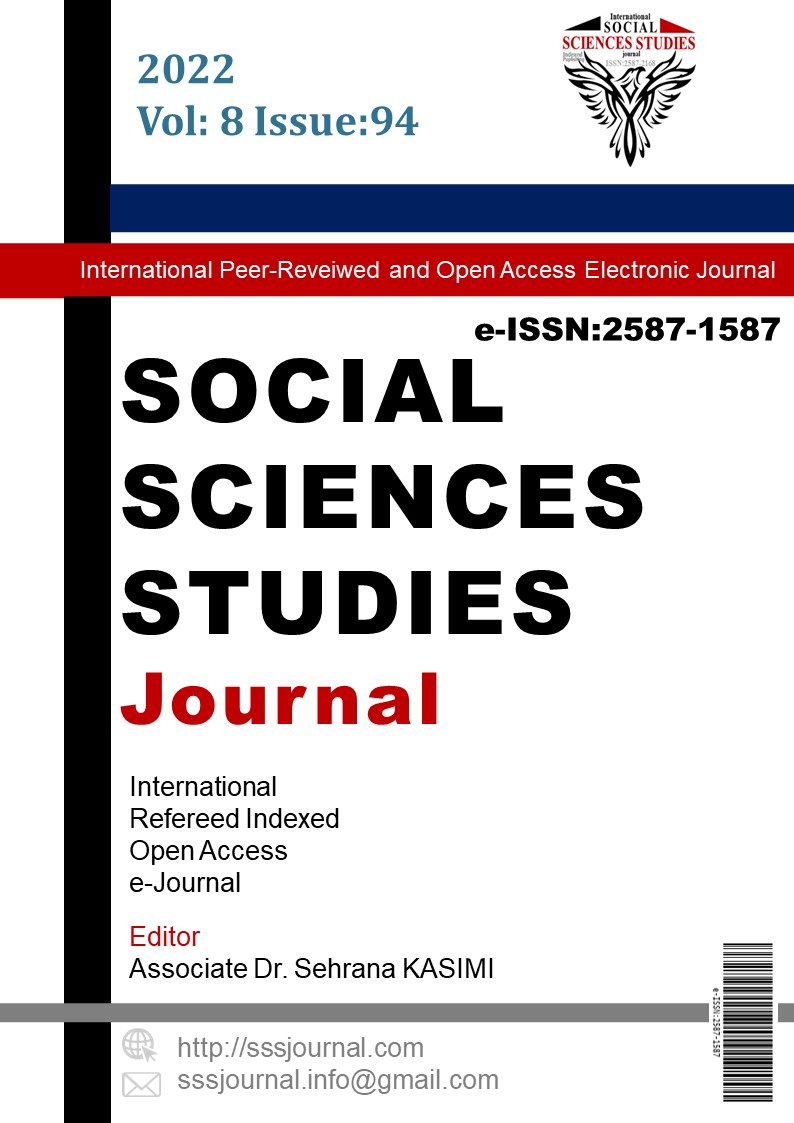Author :
Abstract
Teknolojinin bütün kurumlarda hızla yer aldığı günümüzde geleceğin öğretmenlerini teknoloji kullanımına hazırlamak önem kazanmıştır. Söz konusu hazırlığın ne düzeyde olduğu ise merak konusudur. Bu araştırmanın amacı, eğitim teknolojileri alanında sıkça kullanılan ve farklı dillere uyarlaması yapılan tek boyutlu Synthesize Qualitative Data-model (SQD) ölçeğini Türkçeye uyarlayarak (Teknoloji Entegrasyon Stratejileri Ölçeğinin) geçerlik ve güvenirlik çalışmasını yapmaktır. Çalışmanın araştırma grubu, farklı öğretmenlik programlarında (Sosyal bilgiler öğretmenliği, Türkçe Öğretmenliği, Okulöncesi öğretmenliği, Sınıf öğretmenliği, Rehberlik ve psikolojik danışmanlık) okuyan toplam 253 katılımcıdan oluşmaktadır. 22 maddenin yer aldığı orijinal ölçek, tek faktörlüdür. Ölçeğin uyarlama sürecinde sırasıyla çeviri, geri çeviri yapılmış ve uzman görüşü alınmıştır. Uzmanlardan gelen dönütler sonrasında maddeler, güncellenmişlerdir. Pilot uygulamadan sonra 253 veri seti üzerinden doğrulayıcı faktör analizi yapılmıştır. Cronbach Alpha (α=0,98), Guttman iki yarı test (0,97) ve Spearman-Brown iki yarı test korelasyon (0,97) katsayıları, oldukça yüksek düzeylerdedir. Bütün maddeler için madde-toplam korelasyonunun 0,68 ile 0,85 aralığında dolayısıyla 0,30’dan yüksek olduğu görülmektedir. Uyarlanan bu ölçeğin, Türkiye örnekleminde teknoloji entegrasyon stratejileri konusu ile bağıntılı akademik çalışmalarda kullanılabileceği düşünülmektedir
Keywords
Abstract
In today's world, where technology is rapidly taking place in all institutions, it has become important to prepare future teachers for the use of technology. The level of preparation in question is a matter of curiosity. This research aims to adapt the one-dimensional Synthesize Qualitative Data-model (SQD) scale, which is frequently used in the field of educational technologies and adapted to different languages, into Turkish (Technology Integration Strategies Scale) to perform the validity and reliability study. The research group of the study consists of a total of 253 participants studying in different teaching programs (Social Studies Teaching, Turkish Language Teaching, Preschool Teaching, Classroom Teaching, Guidance and Psychological Counseling). The original scale, which includes 22 items, has a single factor. In the adaptation process of the scale, translation and back translation were made respectively and expert opinion was taken. After the feedback from the experts, the items were updated. After the pilot application, confirmatory factor analysis was performed on 253 data sets. The Cronbach Alpha (α=0.98), Guttman two-half test (0.97) and Spearman-Brown two-half test correlation coefficients (0.97) are quite high. It is seen that the item-total correlation for all items ranges from 0.68 to 0.85, thus higher than 0.30. It is thought that this adapted scale can be used in academic studies related to technology integration strategies in the Turkish sample.
Keywords
- Başol, G. (2018). Eğitimde ölçme ve değerlendirme. Pegem. Ankara.
- Başol, G. (2018). Eğitimde ölçme ve değerlendirme. Pegem. Ankara.
- Brun, M., & Hinostroza, J. E. (2014). Learning to become a teacher in the 21st century: ICT integration in Initial Teacher Education in Chile. Educational Technology & Society, 17, 222-238.
- Büyüköztürk, Ş. (2011). Veri Analizi El Kitabı (14. baskı). Pegem. Ankara.
- Çapık, C., Gözüm, S., & Aksayan, S. (2018). Kültürlerarası ölçek uyarlama aşamaları, dil ve kültür uyarlaması: Güncellenmiş rehber. Florence Nightingale Journal of Nursing, 26(3), 199-210.
- Çokluk, Ö., Şekercioğlu, G. ve Büyüköztürk, Ş. (2010). Sosyal Bilimler İçin Çok Değişkenli İstatistik. Pegem. Ankara.
- International Society for Technology in Education (ISTE). (2021). ISTE Standards For Educators. Retrieved from https://www.iste.org/standards/iste-standards-for-teachers
- Karasar N. (2014). Bilimsel Araştırma Yöntemi. Nobel. Ankara
- Kaufman, K. (2015). Information communication technology: challenges & some prospects from preservice education to the classroom. Mid-Atlantic Education Review, 2, 1-11.
- Meydan, C. H. ve Şeşen, H. (2011). Yapısal Eşitlik Modellemesi AMOS Uygulamaları. Detay. Ankara. Özdamar, K. (2016). Ölçek ve test geliştirme yapısal eşitlik modellemesi. Nisan. Eskişehir
- Seçer, İ. (2015). Psikolojik test geliştirme ve uyarlama süreci: SPSS ve LISREL uygulamaları. Anı.
- Tondeur, J., Aesaert, K., Prestridge, S., & Consuegra, E. (2018). A multilevel analysis of what matters in the training of pre-service teacher's ICT competencies. Computers & Education, 122, 32-42.
- Tondeur, J., Scherer, R., Baran, E., Siddiq, F., Valtonen, T., & Sointu, E. (2019). Teacher educators as gatekeepers:Preparing the next generation of teachers for technology integration in education. British Journal of Educational Technology, 50(3), 1189-1209.
- Tondeur, J., Van Braak, J., Sang, G., Voogt, J., Fisser, P., & Ottenbreit-Leftwich, A. (2012). Preparing pre-serviceteachers to integrate technology in education: A synthesis of qualitative evidence. Computers & Education, 59(1), 134-144.
- Tondeur, J., van Braak, J., Siddiq, F., & Scherer, R. (2016). Time for a new approach to prepare future teachers for educational technology use: Its meaning and measurement. Computers & Education, 94, 134-150.





